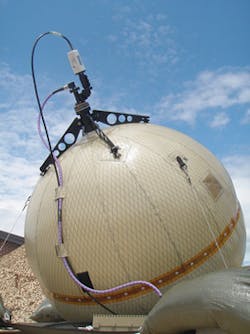ABERDEEN PROVING GROUND, Md. - U.S. Army satellite communications (SATCOM) experts are surveying industry to find RF and microwave companies able to develop full-duplex SATCOM links that can operate on Ku and C bands from one SATCOM antenna measuring at least 16 meters in diameter.
Officials of the Army Contracting Command at Aberdeen Proving Ground, Md., issued a request for information (W56KGU13RA424) for the Advanced Technologies for Fixed and Transportable Satellite Earth Terminals-16-meter Dual-Band (Ku-Band and C-Band) Antenna project. The RFI, issued on behalf of the Army Research, Development and Engineering Command (RDECOM), Communications Electronics Research, Development and Engineering Center (CERDEC), is looking for SATCOM links at C and Ku bands, capable of both, but remotely selectable and only operating on one chosen band at a time.
C-band links operate on frequencies from 4 to 8 GHz for long-distance radio telecommunications and weather radar systems. C-band SATCOM signals perform better than Ku-band in bad weather due to attenuation from moisture. Ku-band links operate on frequencies from 12 to 18 GHz for SATCOM fixed and broadcast radio communication services, as well as for radar.
Army researchers are looking for a SATCOM antenna 16 meters or greater in diameter capable of receiving and transmitting simultaneously at the C and extended bands, officials say. It must be able to perform Ku-band full duplex operations in the C and Ku bands using the same aperture while simultaneously maintaining power and bandwidth requirements within the FCC and Intelsat standards.
Ultimately Army researchers want to sponsor a low-risk program that potentially leads to a test aperture at Aberdeen Proving Ground and 12 or more identical systems and system installations in various locations around the world.
For now, Army researchers are asking for industry white papers on the technical feasibility of combining C- and Ku-band capabilities into one aperture; the estimated time necessary to develop such a system; potential production rates; the feasibility of installing several systems simultaneously in different locations; and the performance of the system in various configurations.
More information is online at www.fbo.gov/notices/85eb9e98f75ffaae7378bb7361ff02d8.




